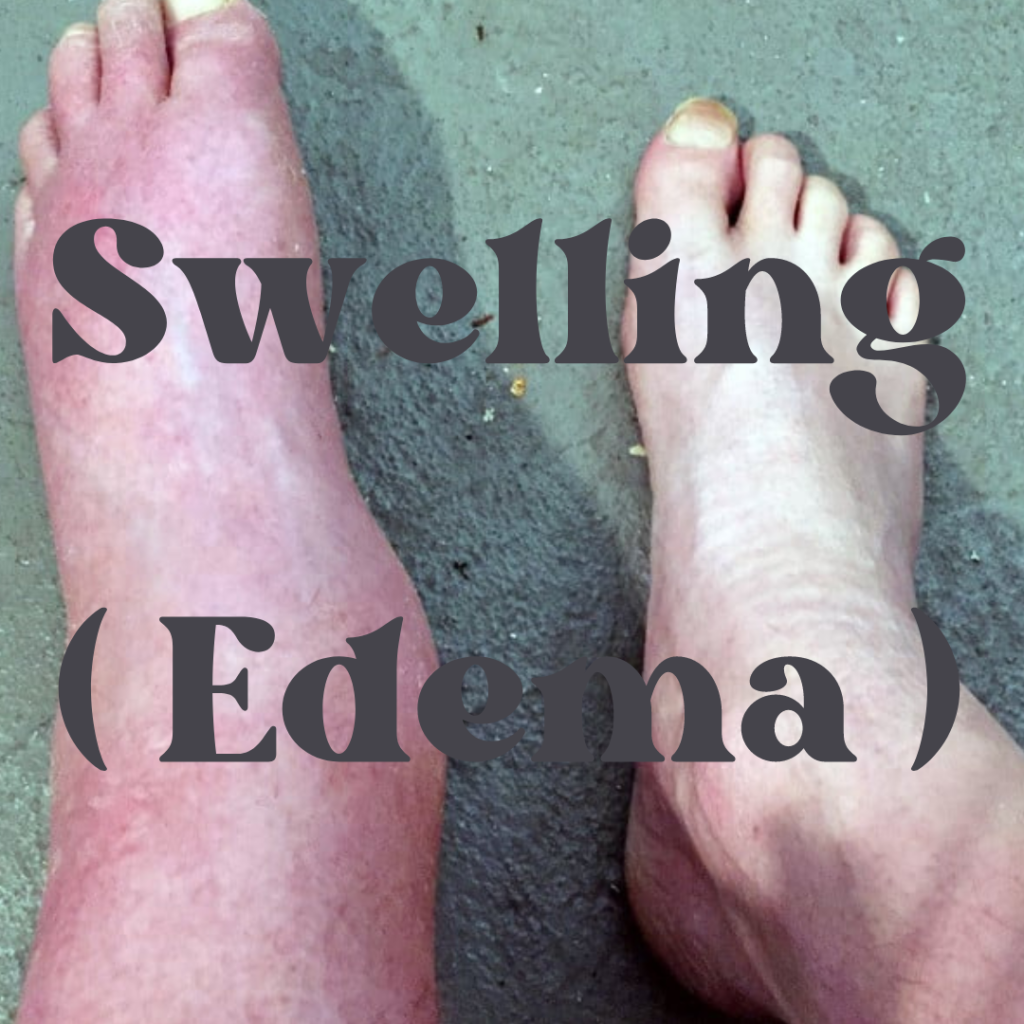Understanding Swelling: Causes, Symptoms, and Management

Swelling, also known as edema, is a common bodily response to various factors such as injuries, illnesses, or even simple lifestyle choices. While it’s often a temporary and benign issue, understanding the causes, symptoms, and management of swelling is essential to ensure your well-being and comfort. In this blog post, we will delve into the world of swelling and explore how to deal with it effectively.
What Is Swelling?
Swelling occurs when there is an abnormal accumulation of fluid in the body’s tissues. This buildup of fluid can happen anywhere in the body and may manifest as puffiness, enlargement, or a feeling of tightness in the affected area. Swelling can be localized to a specific body part, like the ankle or a finger, or it can be more generalized and affect the entire body.
Common Causes of Swelling
Swelling can occur for a variety of reasons, and the underlying cause can range from benign and temporary to more serious medical conditions. Some of the common causes of swelling include:
- Injuries and Trauma: One of the most common reasons for swelling is an injury or trauma to a particular area of the body. This could be a sprained ankle, a bruise, or a broken bone. Swelling is the body’s natural response to injury as it sends extra fluid to the affected area to promote healing.
- Infections: Infections, such as cellulitis, abscesses, or infected wounds, can cause localized swelling at the site of the infection. This happens as the body sends immune cells to fight off the infection, resulting in inflammation and swelling.
- Allergies: Allergic reactions to foods, insect stings, medications, or other allergens can lead to generalized swelling, a condition known as angioedema. This can result in facial swelling, hives, and, in severe cases, difficulty breathing.
- Medical Conditions: Underlying medical conditions like heart failure, kidney disease, liver disease, and certain types of arthritis can lead to fluid retention and generalized swelling throughout the body.
- Lifestyle Choices: Prolonged standing, sitting, or excessive salt consumption can lead to fluid retention and swelling in the legs and ankles.
- Medications: Some medications, such as certain blood pressure medications, can have swelling as a side effect.
- Menstrual Cycle: Many women experience mild swelling, often referred to as bloating, during their menstrual cycle due to hormonal changes.
- Pregnancy: Pregnant women often experience swelling in their hands, feet, and ankles, known as edema, due to hormonal changes and increased blood volume.
- Chronic Venous Insufficiency: This condition affects the veins in the legs and can lead to swelling, especially in the lower limbs.
- Inflammatory Conditions: Diseases like rheumatoid arthritis and lupus can lead to chronic inflammation and swelling in joints and other areas.
- Circulatory Issues: Poor circulation can result in fluid pooling in the legs, causing swelling. Conditions like deep vein thrombosis can lead to circulation problems.
- Gastrointestinal Disorders: Liver and kidney diseases can cause fluid retention, leading to swelling, particularly in the abdomen and lower extremities.
- Thyroid Disorders: Both an overactive thyroid (hyperthyroidism) and an underactive thyroid (hypothyroidism) can contribute to swelling and fluid retention.
Symptoms of Swelling
Swelling, or edema, can manifest with various symptoms, depending on the underlying cause and the specific area of the body affected. Common symptoms associated with swelling include:
- Puffiness and Enlargement: The affected area may appear swollen, larger than usual, and feel puffy to the touch.
- Tightness and Discomfort: Swelling often leads to a sensation of tightness or fullness in the affected area. This can cause discomfort or a feeling of heaviness.
- Changes in Skin Texture: The skin over the swollen area may appear stretched, shiny, or even dimpled. In severe cases, the skin may become so stretched that it feels like it might burst.
- Pain and Tenderness: Swollen areas can be painful and tender to the touch, especially if the swelling is due to an injury or inflammation.
- Reduced Range of Motion: Swelling in joints can restrict movement and flexibility. This limitation in the range of motion can be especially noticeable if the swelling affects the hands, feet, or knees.
- Imprints or Indentations: Pressing on the swollen area may leave temporary imprints or indentations on the skin. This is known as pitting edema and is commonly seen in conditions like heart failure or kidney disease.
- Numbness or Tingling: If swelling puts pressure on nerves, it can cause sensations of numbness, tingling, or a “pins and needles” feeling in the affected area.
- Skin Color Changes: In severe cases, the skin over the swollen area may appear red or pink due to increased blood flow or bluish-purple if there is a lack of oxygenated blood reaching the tissues.
- Respiratory Distress: In cases of severe swelling, such as in angioedema, swelling in the throat and airways can lead to difficulty breathing, a hoarse voice, or a feeling of suffocation.
- Abdominal Swelling: Swelling in the abdomen (ascites) can cause a feeling of fullness, bloating, and discomfort. It may also lead to weight gain due to the accumulation of fluid in the abdominal cavity.
Managing Swelling
Here are some general strategies that can help you effectively manage and alleviate swelling:
- Rest: If the swelling is due to an injury or overuse of a body part, it’s essential to rest and avoid putting unnecessary strain on the affected area. Immobilizing the area may help reduce swelling and promote healing.
- Elevation: Elevate the swollen area above the level of your heart whenever possible. This can help reduce fluid buildup by aiding its drainage. For example, if you have ankle swelling, prop your leg up with pillows.
- Ice: Applying cold packs or ice to the swollen area can help constrict blood vessels and reduce inflammation. Use a cloth or towel to protect your skin and apply ice for 15-20 minutes at a time. Do not apply ice directly to the skin.
- Compression: Wearing compression garments, such as elastic bandages or compression stockings, can help reduce swelling and promote proper circulation. Make sure to follow your healthcare provider’s guidance on how to use them correctly.
- Over-the-Counter Medications: Non-prescription anti-inflammatory medications, like ibuprofen or naproxen, may help reduce swelling and alleviate pain. Consult your healthcare provider or a pharmacist before using these medications, especially if you have any underlying medical conditions.
- Lymphatic Drainage Massage: Gentle massage techniques or lymphatic drainage can help stimulate the circulation of fluid in the affected area and reduce swelling. Consult with a trained massage therapist for guidance.
- Healthy Diet: Reducing your salt intake can help prevent fluid retention, which is a common cause of swelling. Maintaining a balanced diet rich in fruits, vegetables, and whole grains can also help.
- Stay Hydrated: Proper hydration can help maintain the balance of fluids in your body. Make sure to drink an adequate amount of water daily, but avoid excessive consumption.
- Avoid Triggering Factors: If you have allergies or sensitivities that lead to swelling, avoid allergens and triggers as much as possible. Always carry necessary medications, like antihistamines, for prompt relief.
- Monitor Medication Use: If you suspect that a medication is causing your swelling, consult your healthcare provider. They can adjust your medication or recommend alternatives.
- Exercise Regularly: Engaging in regular physical activity can help improve blood circulation and reduce the risk of swelling, especially in the legs. Simple exercises like walking and leg stretches can be beneficial.
- Reduce Stress: Stress can exacerbate inflammation and swelling. Practicing stress-reduction techniques, such as meditation, yoga, or deep breathing exercises, can be helpful.
It’s important to remember that the management of swelling should be tailored to the specific cause and your individual circumstances. If you have persistent or severe swelling, especially if it is associated with other concerning symptoms, consult a healthcare professional for a thorough evaluation and appropriate treatment.
Disclaimer
The information provided in this blog post is for informational purposes only and should not be considered a substitute for professional medical advice. Always consult with a qualified healthcare provider for a proper diagnosis and individualized treatment plan for any health-related concerns. This blog post is not intended to provide medical guidance or replace professional medical advice, diagnosis, or treatment.
Stay updated—subscribe now for informed empowerment!

